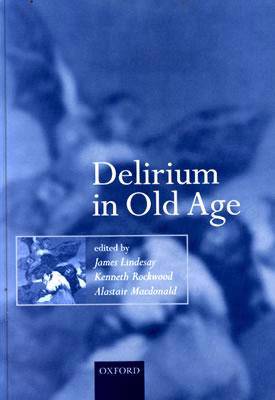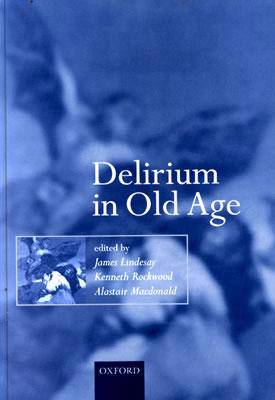
- Afhalen na 1 uur in een winkel met voorraad
- Gratis thuislevering in België vanaf € 30
- Ruim aanbod met 7 miljoen producten
- Afhalen na 1 uur in een winkel met voorraad
- Gratis thuislevering in België vanaf € 30
- Ruim aanbod met 7 miljoen producten
Zoeken
Omschrijving
Delirium is a cognitive disorder consisting of deficits of attention, arousal, consciousness, memory, orientation, perception, speech and language. It represents the most frequent complication of hospitalisation in the older population. Despite its importance in terms of clinical, economic
and social considerations, and despite considerable advances in the past decade, it remains a relatively misunderstood and mis-diagnosed condition.
This book provides a state -of-the-art update of delirium research, covering its history, conceptualisation, measurement, epidemiology, pathophysiology, assessment, diagnosis, causes, prevention and management. The final chapter takes a look to the future, highlighting the importance of ongoing
interdisciplinary research.
As well as being important as a clinical syndrome in its own right, the study of delirium provides a valuable opportunity to understand brain functioning at a fundamental level, and as it is a preventable codition, it is also now being used as a marker to measure the quality of hospital care
provided for older people.
This volume will serve as a catalyst to revive interest and progress in delirium research and clinical care, and should be read by psychiatrists, neurologists, geriatricians and all those involved in working with the elderly in hospitals otr in the community.
and social considerations, and despite considerable advances in the past decade, it remains a relatively misunderstood and mis-diagnosed condition.
This book provides a state -of-the-art update of delirium research, covering its history, conceptualisation, measurement, epidemiology, pathophysiology, assessment, diagnosis, causes, prevention and management. The final chapter takes a look to the future, highlighting the importance of ongoing
interdisciplinary research.
As well as being important as a clinical syndrome in its own right, the study of delirium provides a valuable opportunity to understand brain functioning at a fundamental level, and as it is a preventable codition, it is also now being used as a marker to measure the quality of hospital care
provided for older people.
This volume will serve as a catalyst to revive interest and progress in delirium research and clinical care, and should be read by psychiatrists, neurologists, geriatricians and all those involved in working with the elderly in hospitals otr in the community.
Specificaties
Betrokkenen
- Auteur(s):
- Uitgeverij:
Inhoud
- Aantal bladzijden:
- 238
- Taal:
- Engels
- Reeks:
Eigenschappen
- Productcode (EAN):
- 9780192632753
- Verschijningsdatum:
- 1/01/2003
- Uitvoering:
- Hardcover
- Formaat:
- Genaaid
- Afmetingen:
- 241 mm x 170 mm
- Gewicht:
- 526 g

Alleen bij Standaard Boekhandel
+ 679 punten op je klantenkaart van Standaard Boekhandel
Beoordelingen
We publiceren alleen reviews die voldoen aan de voorwaarden voor reviews. Bekijk onze voorwaarden voor reviews.











